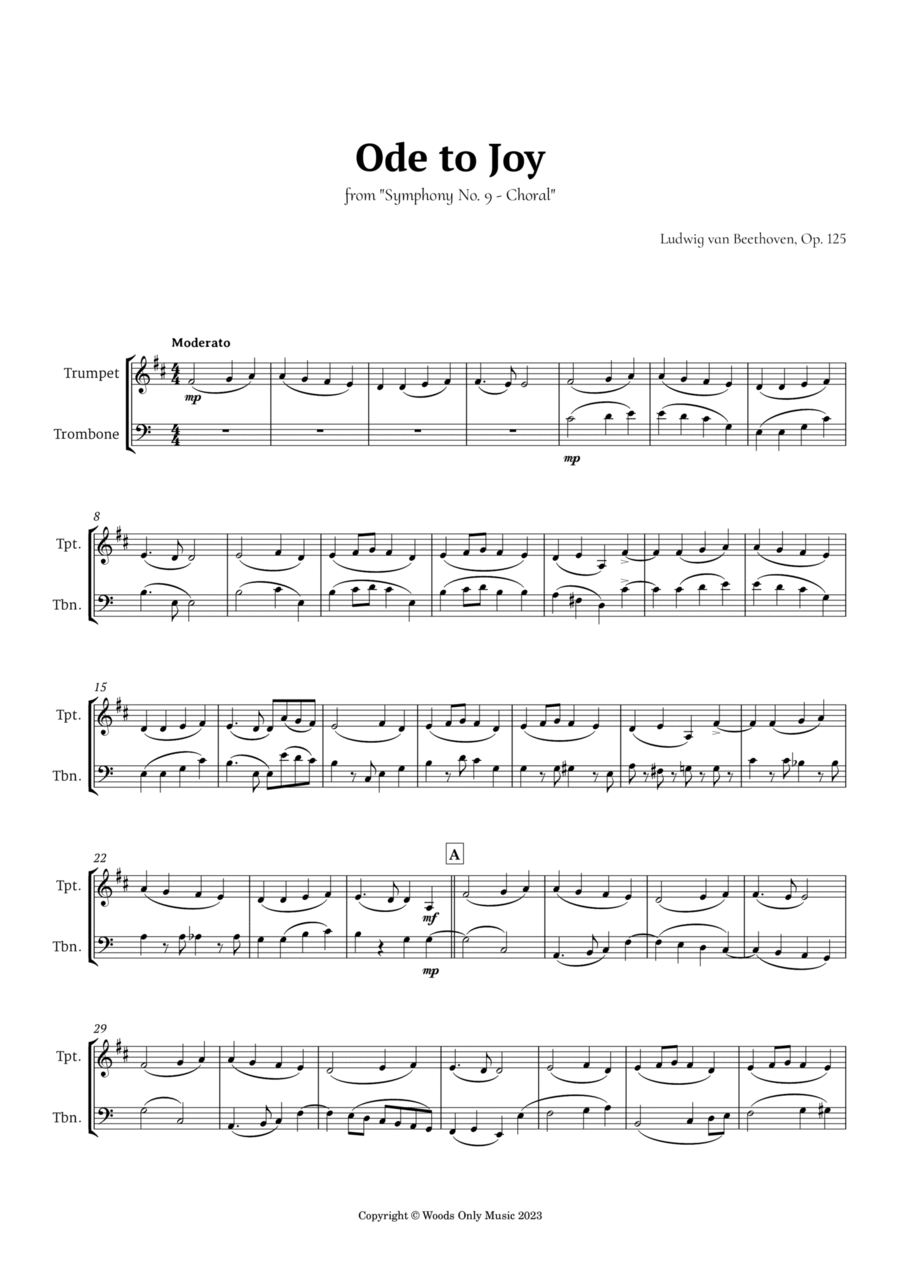B-Flat Trumpet,Instrumental Duet,Trombone - Level 2 - Digital Download SKU: A0.1266572 Composed by Ludwig van Beethoven. Arranged by Ander. 19th Century,Classical,March,Opera,Romantic Period. 6 pages. Woods Only, Arrangements #859242. Published by Woods Only, Arrangements (A0.1266572). This Trumpet and Trombone Duet arrangement was created to preserve the characteristics of the original work, inspiring and significant to Beethovenâs well-known choral symphony. It is suitable for young music students and professional musicians, for recitals, repertoire, academic presentations, and didactic material. The transcription is faithful to the structure, with only one key change, maintaining the essence of the striking melody. Beethovenâs Ninth Symphony Op. 125 incorporates part of the poem An die Freude (âTo Joyâ), a hymn written by Friedrich Schiller, with the text sung by soloists and a choir in its last movement. It was the first example of a major composer using the human voice as prominently as instruments in a symphony, creating a far-reaching work that set the tone for the symphonic form adopted by Romantic composers. This is Ludwig van Beethovenâs last complete symphony. The choral symphony, better known as the Ninth Symphony or The Ninth, is one of the best-known works in the Western repertoire, considered an icon and predecessor of Romantic music and one of Beethovenâs great masterpieces. It was first performed on May 7, 1824 at the Kärntnertortheater in Vienna, Austria.
